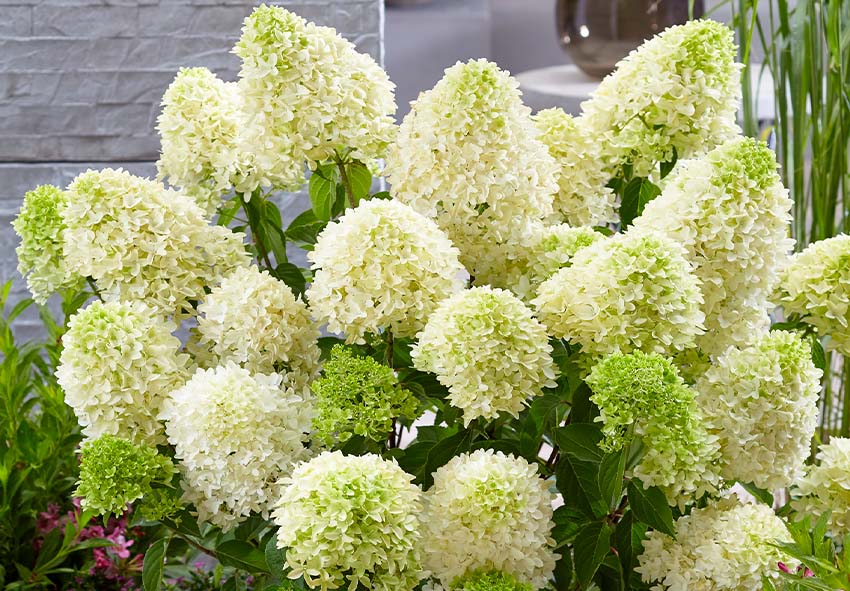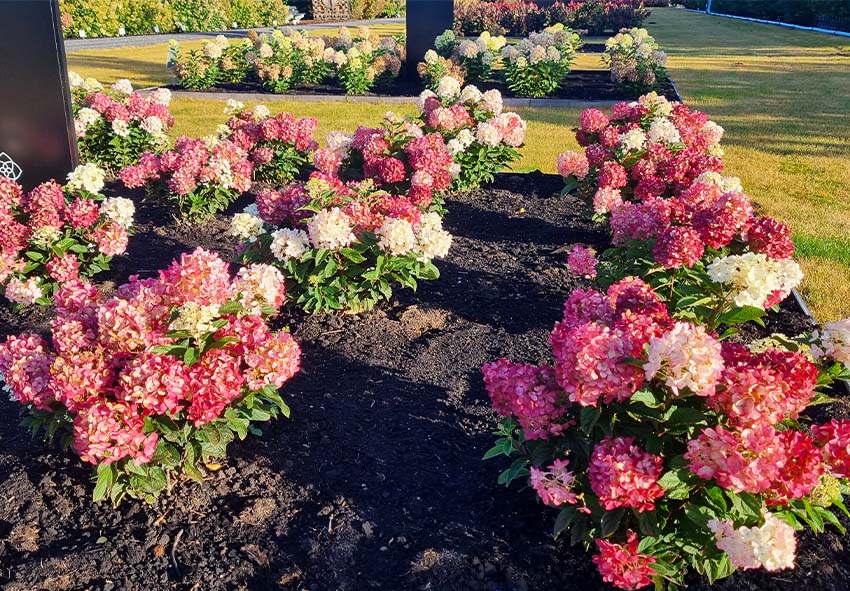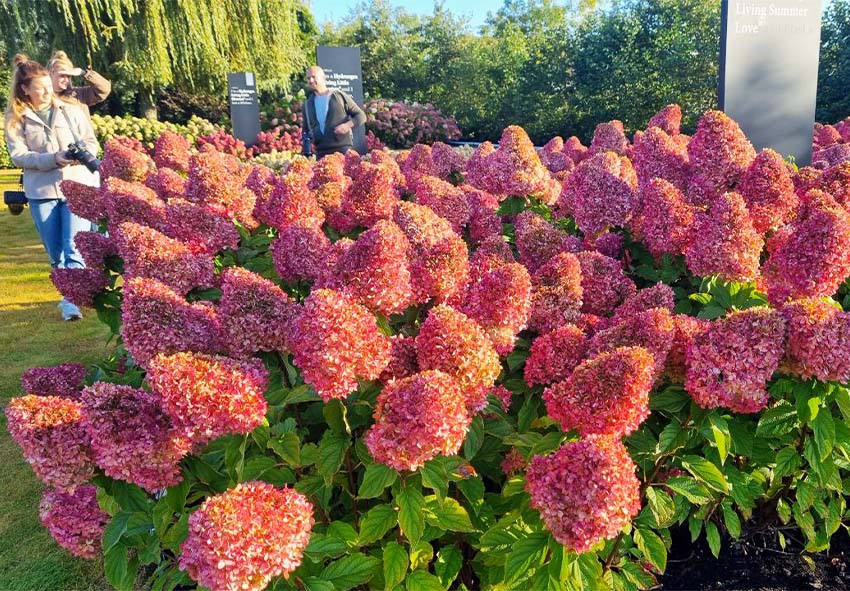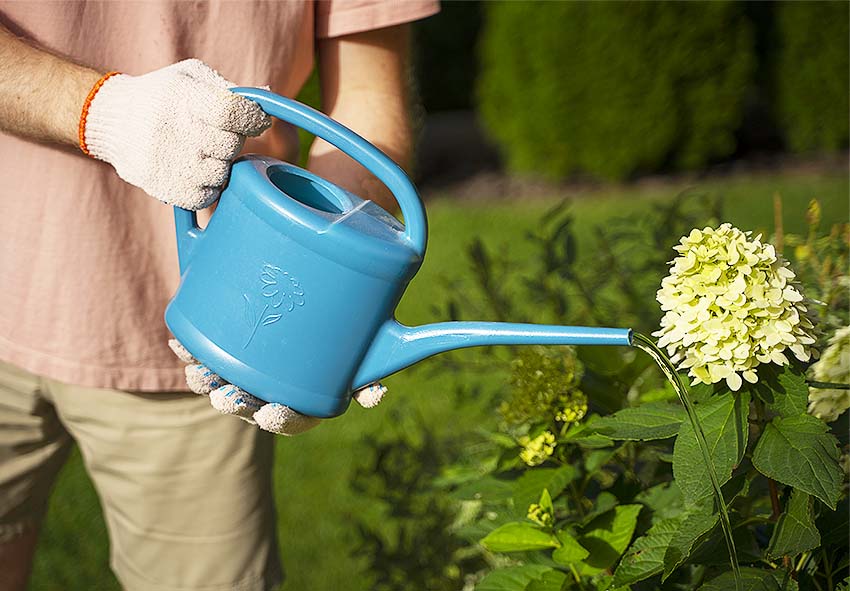Panicle hydrangeas are beloved for their striking blooms, easy care requirements, and versatility in garden design. Whether you’re looking to add height to your landscape or create a stunning focal point, panicle hydrangeas offer an array of options to suit your garden style. Our blog is a perfect place to find all the information you need. In this article, we’ll explore the top five panicle hydrangeas that are sure to elevate your garden landscape and provide year-round beauty.
Understanding Panicle Hydrangeas

Panicle hydrangeas, scientifically known as Hydrangea paniculata, are deciduous shrubs prized for their large, cone-shaped flower clusters that bloom from mid-summer to fall. Unlike other hydrangea varieties, panicle hydrangeas are known for their ability to tolerate full sun and thrive in a wide range of soil conditions. Their blooms start out creamy white and gradually transition to shades of pink, red, or even burgundy as they age, providing visual interest throughout the season.
Benefits of Growing Panicle Hydrangeas
Panicle hydrangeas offer numerous benefits for gardeners, making them a popular choice for landscapes of all sizes:
- Versatility in Garden Design: Panicle hydrangeas can be used as specimen plants, hedges, or focal points in garden beds. Their upright growth habit and stunning blooms make them ideal for creating visual interest and structure in the landscape.
- Low Maintenance Requirements: Unlike some hydrangea varieties that require acidic soil and partial shade, panicle hydrangeas are more forgiving and can thrive in full sun to part shade and a variety of soil types. Once established, they require minimal pruning and maintenance, making them an excellent choice for busy gardeners.
- Seasonal Interest: From summer through fall, panicle hydrangeas put on a spectacular show with their abundant blooms. As the season progresses, the flower colors deepen, providing ever-changing beauty in the garden. Additionally, the dried flower heads can be left on the plant to add interest to the winter landscape.
Best Panicle Hydrangeas Varieties

- ‘Limelight’ Hydrangea (Hydrangea paniculata ‘Limelight’)
The ‘Limelight’ hydrangea is a standout in the garden with its large, lime-green flower heads that age to creamy white and then to pink in the fall. This vigorous grower reaches heights of 6 to 8 feet and is prized for its strong stems that hold up the heavy flower clusters. ‘Limelight’ hydrangea is perfect for adding a bold pop of color to the landscape and makes an excellent cut flower for arrangements.
- ‘PeeGee’ Hydrangea (Hydrangea paniculata ‘Grandiflora’)
The ‘PeeGee’ hydrangea, also known as ‘Grandiflora,’ is a classic favorite cherished for its large, cone-shaped flower clusters that turn from creamy white to pinkish-bronze as they mature. This fast-growing shrub can reach heights of 10 to 20 feet, making it an excellent choice for creating privacy screens or focal points in the garden. ‘PeeGee’ hydrangea is drought-tolerant once established and thrives in full sun to part shade.
- ‘Little Lime’ Hydrangea (Hydrangea paniculata ‘Little Lime’)
For gardeners seeking a more compact option, ‘Little Lime’ hydrangea is an excellent choice. This dwarf version of ‘Limelight’ hydrangea reaches heights of 3 to 5 feet and boasts the same lime-green flower heads that age to pink. ‘Little Lime’ hydrangea is perfect for smaller gardens, containers, or mixed borders and requires minimal pruning to maintain its tidy shape.
- ‘Bobo’ Hydrangea (Hydrangea paniculata ‘Bobo’)
The ‘Bobo’ hydrangea is prized for its compact size and abundant blooms. This dwarf variety reaches heights of only 2 to 3 feet and produces dense, cone-shaped flower clusters that cover the plant from top to bottom. ‘Bobo’ hydrangea is perfect for smaller gardens, rock gardens, or mass plantings and attracts pollinators with its nectar-rich blooms.
- ‘Fire Light’ Hydrangea (Hydrangea paniculata ‘Fire Light’)
For gardeners seeking a bold statement in the landscape, ‘Fire Light’ hydrangea delivers with its vibrant red flower heads that age to shades of deep pink and burgundy. This showy variety reaches heights of 4 to 6 feet and blooms later in the season, extending the hydrangea display well into fall. ‘Fire Light’ hydrangea is perfect for adding drama to mixed borders or as a focal point in the garden.

Here’s a table describing main features for each of these varieties of panicle hydrangeas:
| Variety | Botanical Name | Usage | Colour | Flowering Period | Particularities |
| ‘Limelight’ Hydrangea | Hydrangea paniculata | Specimen, hedge, focal point | Lime-green to pink | Mid-summer to fall | Vigorous grower with strong stems |
| ‘PeeGee’ Hydrangea | Hydrangea paniculata | Privacy screen, focal point | Creamy white to pink | Mid-summer to fall | Fast-growing with large cone-shaped flower clusters |
| ‘Little Lime’ Hydrangea | Hydrangea paniculata | Container, border | Lime-green to pink | Mid-summer to fall | Dwarf variety, compact size, minimal pruning required |
| ‘Bobo’ Hydrangea | Hydrangea paniculata | Rock garden, mass planting | White to pink | Mid-summer to fall | Dwarf variety, dense flower clusters |
| ‘Fire Light’ Hydrangea | Hydrangea paniculata | Mixed borders, focal point | White to red | Late summer to fall | Vibrant red blooms, late blooming variety |
Choosing the Right Panicle Hydrangea for Your Garden
When selecting a panicle hydrangea for your garden, consider the following factors:
- Growth Habit and Size: Choose a variety that fits the scale of your landscape, taking into account its ultimate height and spread.
- Flower Color and Shape: Select a variety with flower colors and shapes that complement your garden style and color scheme.
- Soil and Sunlight Requirements: Consider the soil and sunlight conditions in your garden and choose a variety that will thrive in those conditions.
Matching Hydrangeas to Garden Styles
Panicle hydrangeas can enhance a variety of garden styles, including:
- Cottage Garden: Incorporate panicle hydrangeas into a cottage garden for their romantic blooms and relaxed, informal charm.
- Formal Garden: Use panicle hydrangeas to create structured hedges or formal borders, adding elegance and sophistication to the landscape.
- Contemporary Garden: Showcase panicle hydrangeas in a contemporary garden for their architectural form and striking flower clusters, creating a bold focal point in the modern landscape.
Care and Maintenance Tips

Ensuring the health and longevity of your panicle hydrangeas requires diligent care and maintenance. You need to know how to plant, water, fertilize and sometimes even how to transplant hydrangeas. By following proper techniques, you can enjoy vibrant blooms and healthy growth in your garden.
Planting Panicle Hydrangeas
There are some tips for planting hydrangeas that you may need. When planting panicle hydrangeas, choose a location with well-drained soil and full sun to part shade. Dig a hole twice as wide as the root ball and amend the soil with compost or organic matter before planting. Space multiple plants according to their ultimate size to allow for proper airflow and growth.
Watering and Fertilizing
Water newly planted panicle hydrangeas regularly to establish strong roots, then water deeply during dry periods to keep the soil consistently moist. Apply a balanced fertilizer in early spring to promote healthy growth and abundant blooms. Avoid over-fertilizing, as this can lead to excessive foliage growth at the expense of flowering.
Pruning and Deadheading
Prune panicle hydrangeas in late winter or early spring to remove dead or damaged wood and shape the plant as desired. Deadhead spent blooms throughout the growing season to encourage continuous flowering. Avoid pruning too late in the season, as this can remove flower buds and reduce next year’s bloom potential.
Conclusion
In conclusion, panicle hydrangeas offer a wealth of options for gardeners seeking beautiful, low-maintenance shrubs with year-round interest. Whether you prefer the bold blooms of ‘Limelight’ or the compact size of ‘Bobo,’ there’s a panicle hydrangea variety to suit every garden style and landscape. By choosing the right variety for your garden, providing proper care and maintenance, and incorporating them into your garden design, you can enjoy the beauty of panicle hydrangeas for years to come.
Frequently Asked Questions (FAQs) about Growing Panicle Hydrangeas
1. How much sunlight do panicle hydrangeas need to thrive?
Panicle hydrangeas thrive in full sun to part shade, but they prefer at least 4-6 hours of sunlight daily for optimal flowering. However, they can tolerate more shade than other hydrangea varieties, making them versatile for various garden conditions.
2. When is the best time to plant panicle hydrangeas?
The best time to plant panicle hydrangeas is in early spring or late fall. Planting during these seasons allows the shrubs to establish their root systems before the heat of summer or the cold of winter sets in.
3. Can I order Holland hydrangeas from your online store?
Yes, we offer a wide selection of hydrangeas, including some varieties originating from Holland, renowned for their quality and beauty. Our online store Dutch-bulbs.com features a diverse range of hydrangeas, including panicle hydrangeas, lacecap hydrangeas, and mophead hydrangeas, among others. Explore our collection to find the perfect hydrangea varieties for your garden or landscaping projects.
4. How often should panicle hydrangeas be watered?
Panicle hydrangeas require regular watering, especially during hot, dry periods. Water deeply, ensuring the soil remains consistently moist but not waterlogged. Mulching around the base of the plants helps retain soil moisture and regulate temperature.
5. Do panicle hydrangeas require pruning, and if so, when and how should it be done?
Pruning panicle hydrangeas is generally minimal. Remove dead or damaged wood in late winter or early spring. Deadhead spent blooms throughout the growing season to encourage continuous flowering. Avoid heavy pruning, as it can reduce next year’s bloom potential.
Published: 10.04.2024
